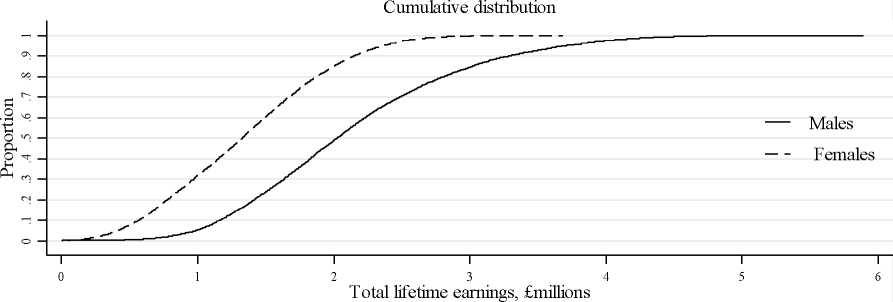Total lifetime earnings, £millions

Figure shows the simulated median annual earnings at each age for male and female
graduates. It shows that median annual earnings are simulated to rise from around
£12,000 for men and women at age 22 to a peak of around £73,000 (£47,000) for
men (women) at age 56 (55). It must be remembered that these simulated earnings
values are considerably higher than the median values observed in today’s distribution
of graduates (where the median male graduate annual earnings across the 22-60
population is around £30,000 and the median female graduate earnings is around
£21,00017). This is because we are simulating future earnings for a graduate cohort
starting undergraduate university in 2008-09, building in 2% real earnings growth
each year, over 40 years, in addition to any increment to earnings due to age or
experience.
Figure . Simulated median earnings for men and women, ages 22-60
It is worth emphasising that our earnings simulations are not predictions of the future,
they are instead simulations based on a series of assumptions. Predicting the earnings
17 Source: Spring 2005 Quarterly Labour Force Survey.
11
More intriguing information
1. Types of Cost in Inductive Concept Learning2. The name is absent
3. The Response of Ethiopian Grain Markets to Liberalization
4. The voluntary welfare associations in Germany: An overview
5. Dual Inflation Under the Currency Board: The Challenges of Bulgarian EU Accession
6. The East Asian banking sector—overweight?
7. The name is absent
8. Testing Panel Data Regression Models with Spatial Error Correlation
9. Julkinen T&K-rahoitus ja sen vaikutus yrityksiin - Analyysi metalli- ja elektroniikkateollisuudesta
10. Effects of red light and loud noise on the rate at which monkeys sample the sensory environment